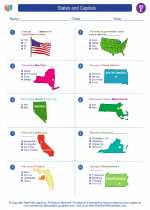Human Activity
Human activity refers to the actions and behaviors of human beings that impact the environment, society, and the world at large. These activities can range from daily routines such as commuting to work or school, to larger scale actions such as industrial production and urban development.
Types of Human Activities
Human activities can be broadly categorized into several types:
- Economic Activities: These include activities related to the production, distribution, and consumption of goods and services. Examples include farming, manufacturing, trade, and tourism.
- Social Activities: These include interactions and behaviors within a society, such as education, healthcare, and cultural events.
- Environmental Activities: These involve human interactions with the natural environment, including activities related to conservation, resource extraction, and pollution control.
- Recreational Activities: These encompass leisure and recreational pursuits, such as sports, entertainment, and travel.
Impact of Human Activities
Human activities have a significant impact on the world in various ways:
- Environmental Impact: Many human activities contribute to environmental degradation, including deforestation, pollution, and climate change.
- Social Impact: Human activities shape the structure and dynamics of societies, influencing factors such as population growth, urbanization, and cultural diversity.
- Economic Impact: The production and consumption activities of humans drive economic growth and development, but can also lead to issues such as inequality and resource depletion.
Study Guide
To understand human activity, consider the following key points for study and reflection:
- Identify and describe examples of economic, social, environmental, and recreational activities in your local community.
- Examine the impact of human activities on the environment, including both positive and negative effects.
- Analyze the role of human activities in shaping social and cultural norms, traditions, and institutions.
- Consider the ethical and moral implications of certain human activities, such as exploitation of natural resources or labor practices.
- Explore potential solutions and strategies for mitigating the negative impacts of human activities on the planet and society.
By exploring these aspects of human activity, you can gain a deeper understanding of the complex relationship between human behavior and the world around us.
.◂Social Studies Worksheets and Study Guides Fifth Grade. States and Capitals
Study Guide States and Capitals
States and Capitals  Worksheet/Answer key
Worksheet/Answer key States and Capitals
States and Capitals  Worksheet/Answer key
Worksheet/Answer key States and Capitals
States and Capitals  Worksheet/Answer key
Worksheet/Answer key States and Capitals
States and Capitals 

 Worksheet/Answer key
Worksheet/Answer key
 Worksheet/Answer key
Worksheet/Answer key
 Worksheet/Answer key
Worksheet/Answer key

The resources above cover the following skills:
Geography: A student should be able to utilize, analyze, and explain information about the human and physical features of places and regions. A student who meets the content standard should:
Understand that a region is a distinct area defined by one or more cultural or physical features.